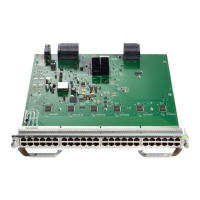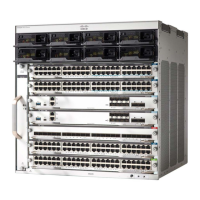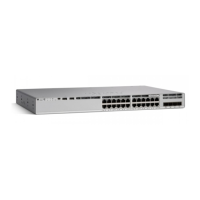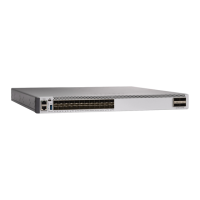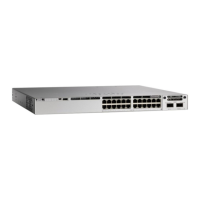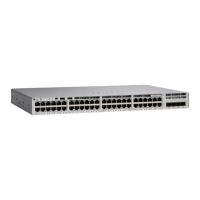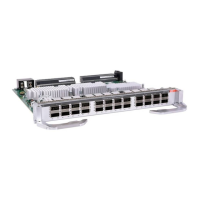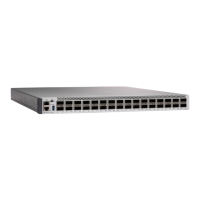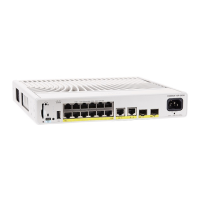server hostname) option 150 (the TFTP server address), and option 125 (description of the Cisco IOS image
file) settings.
After you install the device in your network, the auto-image update feature starts. The downloaded configuration
file is saved in the running configuration of the device, and the new image is downloaded and installed on the
device. When you reboot the device, the configuration is stored in the saved configuration on the device.
DHCP Server Configuration Guidelines
Follow these guidelines if you are configuring a device as a DHCP server:
• You should configure the DHCP server with reserved leases that are bound to each device by the device
hardware address.
• If you want the device to receive IP address information, you must configure the DHCP server with these
lease options:
• IP address of the client (required)
• Subnet mask of the client (required)
• DNS server IP address (optional)
• Router IP address (default gateway address to be used by the device) (required)
• If you want the device to receive the configuration file from a TFTP server, you must configure the
DHCP server with these lease options:
• TFTP server name (required)
• Boot filename (the name of the configuration file that the client needs) (recommended)
• Hostname (optional)
• Depending on the settings of the DHCP server, the device can receive IP address information, the
configuration file, or both.
• If you do not configure the DHCP server with the lease options described previously, it replies to client
requests with only those parameters that are configured. If the IP address and the subnet mask are not in
the reply, the device is not configured. If the router IP address or the TFTP server name are not found,
the device might send broadcast, instead of unicast, TFTP requests. Unavailability of other lease options
does not affect autoconfiguration.
• The device can act as a DHCP server. By default, the Cisco IOS DHCP server and relay agent features
are enabled on your device but are not configured. (These features are not operational.)
Purpose of the TFTP Server
Based on the DHCP server configuration, the device attempts to download one or more configuration files
from the TFTP server. If you configured the DHCP server to respond to the device with all the options required
for IP connectivity to the TFTP server, and if you configured the DHCP server with a TFTP server name,
address, and configuration filename, the device attempts to download the specified configuration file from
the specified TFTP server.
If you did not specify the configuration filename, the TFTP server, or if the configuration file could not be
downloaded, the device attempts to download a configuration file by using various combinations of filenames
System Management Configuration Guide, Cisco IOS XE Bengaluru 17.4.x (Catalyst 9400 Switches)
48
Performing Device Setup Configuration
DHCP Server Configuration Guidelines
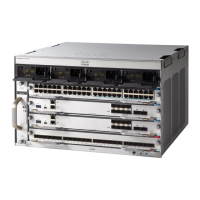
